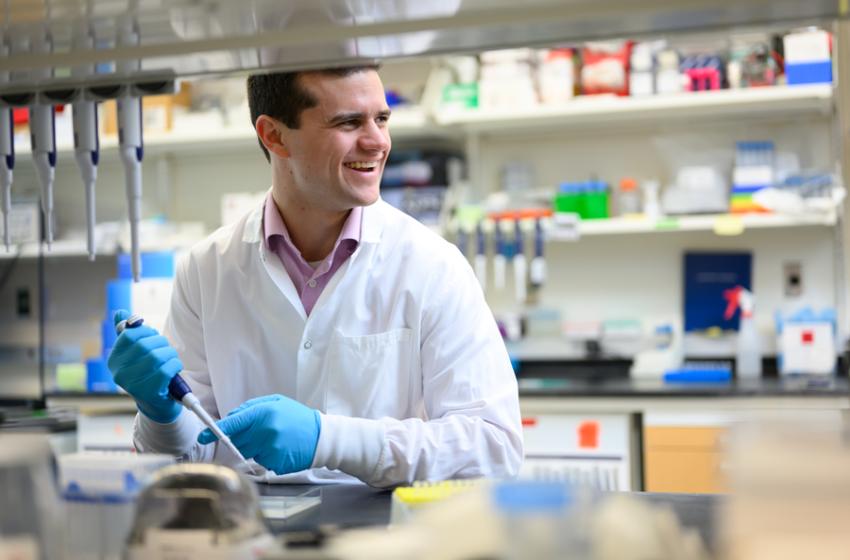Contact us for more information about our research, programs, and initiatives.
We design and deploy methods and systems to more effectively, controllably, and safely transport therapeutic agents to appropriate target sites within the human body for therapeutic and prophylactic applications.
| Researcher | Description |
|---|---|
| Tania Lopez Silva |
The Immunomodulatory and Biomimetic Materials (IMBM) Lab develops material-based technologies to address critical health challenges and enable advanced bioengineering models. Our approach involves the rational design of supramolecular synthetic materials composed of naturally occurring building blocks (such as peptides, sugars, and lipids) that can interact with biological systems and create modular microenvironments. We employ a multi-scale strategy, spanning from molecular design to control nanostructure and bulk material properties, ultimately influencing the biological response to our materials. |
| Mercedes Balcells-Camps Website: Harvard-MIT Biomedical Engineering Center |
Dr. Balcells’ research group in tissue engineering has shown how endothelial cell states are critical to tissue response to injury, vascular and neurological. The concepts she has elaborated have already helped understand why microvascular disease is such an important element and exacerbent of neurologically dementing diseases. Dr. Balcells’ research bridges the cardiovascular and neuroscientific domains – closing the gap between computational predictions and animal models, through functional and signaling studies on endothelial and neighboring cells performed in a highly multidisciplinary fashion. |
| Sangeeta N. Bhatia Website: Laboratory for Multiscale Regenerative Technologies |
The Bhatia Laboratory engineers micro and nanotechnologies, also called “tiny technologies,” to address complex challenges in human health ranging from cancer to liver disease and acquired infections. Operating at the interface of living and synthetic systems, the Bhatia group uses these miniaturization tools to improve areas of medicine including diagnostics, drug delivery, tissue regeneration, and disease modeling. |
| James J. Collins Website: Collins Lab |
James Collins's research focuses on synthetic biology and systems biology, with a particular focus on using network biology approaches to study antibiotic action, bacterial defense mechanisms, and the emergence of resistance. The Collins Lab has has created genetic toggle switches, RNA switches, programmable cells, genetic counters, genetic timers, kill switches for microbes, engineered bacteriophage to combat bacterial infections, and tunable mammalian genetic switches, each with broad applications in medicine and biotechnology. They have also shown that deep learning approaches can be used to discover and design novel antibiotics for treating resistant bacterial infections. |
| Elazer R. Edelman Website: Harvard-MIT Biomedical Engineering Center |
The Edelman Laboratory unites clinicians, engineers, and scientists from academia, industry, and medicine, who guided by a mechanistic understanding of biological and physical systems translate fundamental discoveries into tangible clinical advances. Projects range from examining fundamental basis of dynamical systems and complex diseases, to the interplay of mechanical support devices and native physiology, to investigation of the cellular and molecular mechanisms that govern vascular disease. Using the spectrum of resources from AI to imaging, single cell analysis to clinical trials the Lab transforms complex biological insights into innovative solutions that improve patient outcomes and redefine the boundaries between science and medicine. |
| Robert S. Langer Website: Langer Lab |
A major focus of the Langer Lab is the study and development of polymers to deliver drugs, particularly genetically engineered proteins and DNA, continuously at controlled rates for prolonged periods of time. Our interest in drug delivery systems has extended to selective drug or substance removal systems that may circumvent toxicity. |
| Ellen Roche Website: Therapeutic Technology Design & Development |
Research in the Therapeutic Technology Design and Development Lab incorporates soft robotics, unique fabrication methods and computational analysis tools into the device design process to develop novel strategies for organ assist and tissue repair. We design and develop implantable medical devices that augment or assist native function. |
| Daniel G. Anderson Website: Anderson Lab |
Our research is centered on developing new materials for medicine. We pioneered the use of robotic methods for the development of smart biomaterials for drug delivery and tissue engineering. Our lab has developed methods allowing rapid synthesis, formulation, analysis, and biological testing of large libraries of biomaterials for use in medical devices, cell therapy and drug delivery. |

